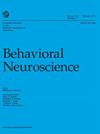Time to contrast models of timing: The structure of temporal memory.
IF 1.6
4区 医学
Q3 BEHAVIORAL SCIENCES
引用次数: 1
Abstract
In the study of animal timing over the last 100 years, we identify three different periods, each characterized by a distinct activity. In the first period, researchers brought timing into the laboratory and explored its multiple expressions empirically. In the second period, the growing body of empirical findings inspired researchers to develop a plethora of timing models that vary in theoretical orientation, scope, depth, and quantitative explicitness. We argue that it is now the time to advance towards a third period, wherein researchers select models by comparing them with one another and with data. We make our case by contrasting how the scalar expectancy theory and the learning-to-time model conceive of temporal memory and learning both in concurrent timing tasks and in retrospective timing tasks. We identify four problems related to the structure of temporal memory and to the rules of temporal learning that challenge these models and that should drive the next steps in modeling the timing abilities of animals. (PsycInfo Database Record (c) 2022 APA, all rights reserved).时间与时间模型的对比:时间记忆的结构。
在对过去100年动物时间的研究中,我们确定了三个不同的时期,每个时期都有一个不同的活动特征。第一个阶段,研究者将时间引入实验室,并从实证角度探索其多重表现形式。在第二个时期,越来越多的实证研究结果激发了研究人员开发了大量的时间模型,这些模型在理论取向、范围、深度和定量清晰度方面各不相同。我们认为,现在是时候向第三个阶段迈进了,在这个阶段,研究人员通过相互比较和与数据比较来选择模型。我们通过对比标量期望理论和学习-时间模型如何理解并发计时任务和回顾性计时任务中的时间记忆和学习来证明我们的观点。我们确定了与时间记忆结构和时间学习规则相关的四个问题,这些问题挑战了这些模型,并且应该推动动物计时能力建模的下一步。(PsycInfo Database Record (c) 2022 APA,版权所有)。
本文章由计算机程序翻译,如有差异,请以英文原文为准。
求助全文
约1分钟内获得全文
求助全文
来源期刊

Behavioral neuroscience
医学-行为科学
CiteScore
3.40
自引率
0.00%
发文量
51
审稿时长
6-12 weeks
期刊介绍:
Behavioral Neuroscience publishes original research articles as well as reviews in the broad field of the neural bases of behavior.
 求助内容:
求助内容: 应助结果提醒方式:
应助结果提醒方式:


